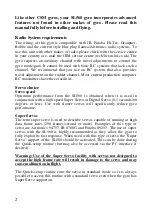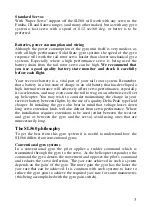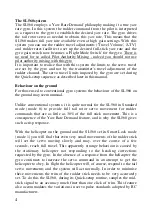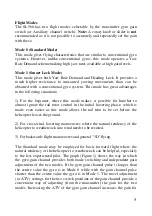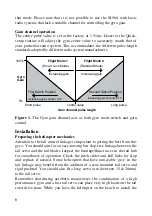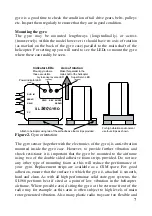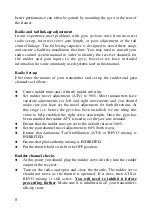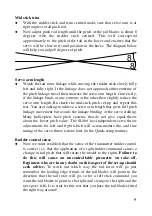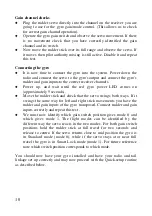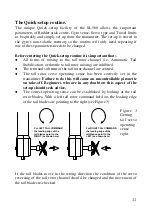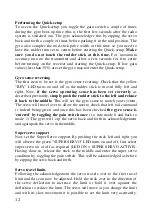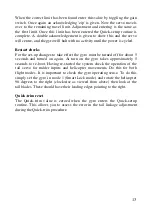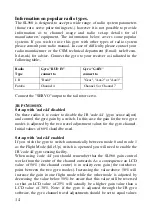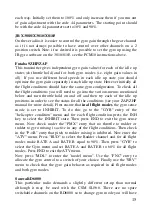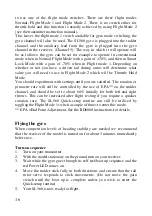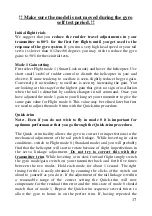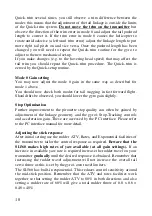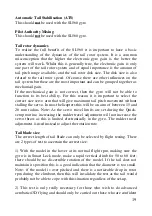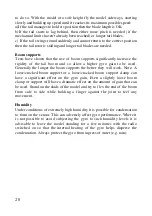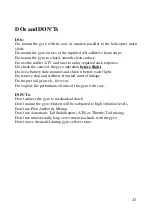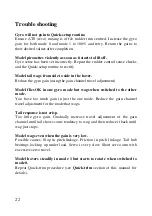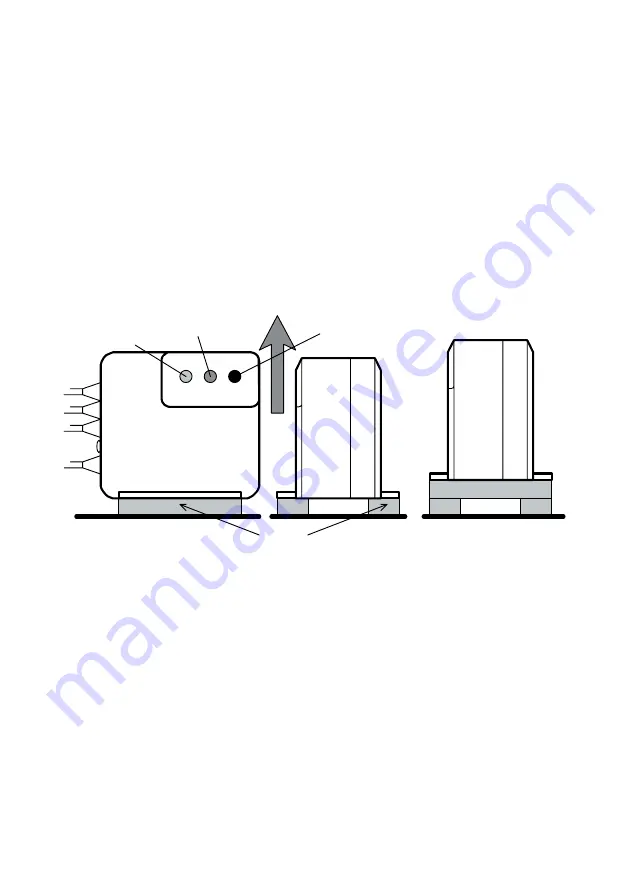
7
gyro is a good time to check the condition of tail drive gears, belts, pulleys
etc. Inspect them regularly to ensure that they are in good condition.
Mounting the gyro
The gyro may be mounted lengthways (longitudinally) or across
(transversely) within the model however it should have its axis of rotation
(as marked on the back of the gyro case) parallel to the main shaft of the
helicopter. For setting up you will need to see the LEDs so mount the gyro
where these can readily be seen.
Axis of rotation
Make this parallel to the
Attach to helicopter using two of the self-adhesive foam strips provided
SERVO
RUD. IN
GAIN
PWR
REV
SL
560
GYRO
Power indicator LED
Gyro sense reverse LED
(red)
(yellow)
Mount gyro where
these are visible
main shaft of the helicopter
Indicator LEDs
For high vibration environment
use four strips as shown.
SUPER
SERVO
Super Servo LED
(green)
PC
Figure 2.
Gyro orientation
The gyro sensor (together with the electronics of the gyro) is anti-vibration
mounted inside the gyro case. However, to provide further vibration and
shock resistance it is important that the gyro be mounted to the airframe
using two of the double sided adhesive foam strips provided. Do not use
any other type of mounting foam as this will reduce the performance of
your gyro. Replacement strips are available as a CSM spare. For good
adhesion, ensure that the surface to which the gyro is attached is smooth,
hard and clean. As with all high performance solid state gyro systems, the
SL560 performs best if sited at a point of low vibration in the helicopter
airframe. Where possible avoid siting the gyro at the extreme front of the
radio tray for example as this area is often subject to high levels of main
rotor generated vibration. Also many plastic radio trays are too flexible and


